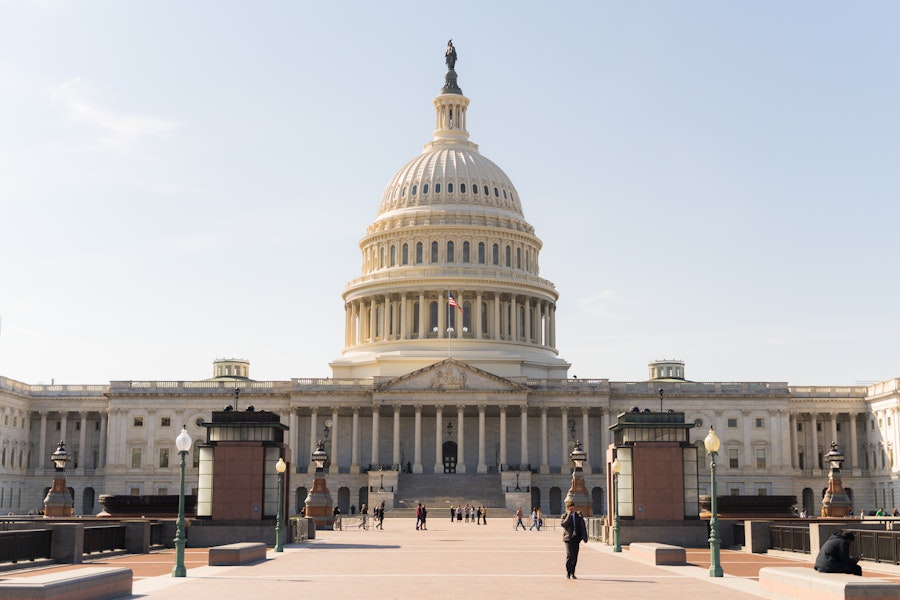15,364 scientists from over 184 countries signed an open letter on November 13 expressing concerns with the damage done to the environment. The scientists claim that the environment’s capacity for life has worsened since 1992, when a similar letter was released by the Union of Concerned Scientists with over 1,700 scientists’ signatures. They supported this claim with recorded increases in carbon emissions and temperatures, as well as decreases in the acreage of forests and the amount of fresh water per capita over the 25 year period.
These scientists are not alone.
A report published by the Yale Program for Climate Change Communication on July 5, 2017 found that 58 percent of Americans believe that climate change is caused mostly by humans. Additionally, a Pew Research Center poll conducted in 2016 found that 74 percent of American adults believe that the country should do whatever it takes to protect the environment.

Yet Congress has remained focused on other issues. Why, in a country that prides itself on citizens’ ability to have their opinions voiced in government, has little been done to solve environmental issues?
The common response to this question would be that the national government is currently controlled by the Republican Party, which prioritizes other issues over climate change, but this does not fully answer the question. In fact, this response only goes to show that partisanship has become synonymous with a stance on environmental reform.
To understand this, it is important to look at the way politicians have looked at environmental issues in the past.
In the decades following the Second World War, Americans began to focus on the environment. In November of 1953, New York City was covered by harmful levels of pollutants; these concerns were raised again in 1963 and 1966, when the city saw similar conditions. In 1969, an oil spill in Santa Barbara, California wreaked havoc on marine life. During this time, a number of publications were produced which educated readers about the significance of pollution, deforestation, nonrenewable energy, and more. As more of the public became aware of the threatening affects humans had on the environment, their concerns led to the enactment of policy.
The federal government, which had traditionally allowed states to have control of environmental law, became active in regulating human actions on the environment. In 1963, Congress passed the Clean Air Act, which was designed to study and prevent pollution on a national level. While it passed a Congress controlled by the Democratic Party, around 40 percent of Republicans in the House of Representatives voted in support of the act.
The National Environmental Policy Act, which was enacted by Congress on January 1, 1970, is another example of legislation produced to protect the environment. The primary function of this act is to require all federal agencies to report the potential effects of their actions on the environment.
This act is a gold standard for bipartisan collaboration in Congress. It passed the Senate unanimously and also the House of Representatives with 372 votes in favor and merely 15 votes in opposition. It was signed into law by former President Richard Nixon, a Republican. President Nixon would also prove influential in the establishment of the Environmental Protection Agency (EPA), a governmental agency established to write and enforce legislation in order to protect human and environmental health.
“The Congress, the Administration and the public all share a profound commitment to the rescue of our natural environment, and the preservation of the Earth as a place both habitable by and hospitable to man,” said former President Nixon in a message to Congress about the establishment of the EPA.
If politicians, across the political spectrum, have historically taken the necessary steps to protect the environment, when did the issue become so partisan?
A recent Pew Research Center poll found that 58 percent of Republicans think that “environmental laws and regulations cost too many jobs and hurt the economy.” This is an increase of 24 percent from 2007. Only 17 percent of Democrats felt the same way, which is a decrease of seven percent from 2007. These statistics show how the polarization surrounding environmental issues is a relatively recent phenomenon.
This is not limited to the environment. A Pew Research Poll from 2014 found that since 2004, 22 percent more Republicans and 9 percent more Democrats find the opposing party to be “very unfavorable.”

President George Washington, who publicly opposed the establishment of political parties, said that it is only natural “for unbridled partisanship, unrestrained by allegiance to a greater cause, to lead to chaos.” In the political climate today, many issues have succumbed to this chaos, with many policy proposals failing due to rejection on a purely partisan basis.
This brings us back to environmental policy. In recent years, the Democratic Party has developed a reputation as the party of the environment. Subsequently, as a repercussion of polarization, the Republican Party has developed into the party against aiding the environment.
Many issues have their roots in the ideologies of the parties. For example, the debate over gay marriage stems from the Republican Party’s support of traditional values and the Democratic Party’s support for social progress. However unlike gay marriage, issues with the environment are founded in science. Both parties want to improve the quality of life for people, so if science shows that the environment is in trouble, it is in everyone’s interest to address the issue. While there should be debate over how the government protects the environment, the need for the government to protect the environment is evident.
Statistics continue to show that humans are having a serious and negative impact on the environment. It is important for politicians to remember what Congress succeeded in doing half a century ago: politicians put aside their political differences, and worked together to address environmental issues with impactful legislation, and this is what we should continue to do today.










